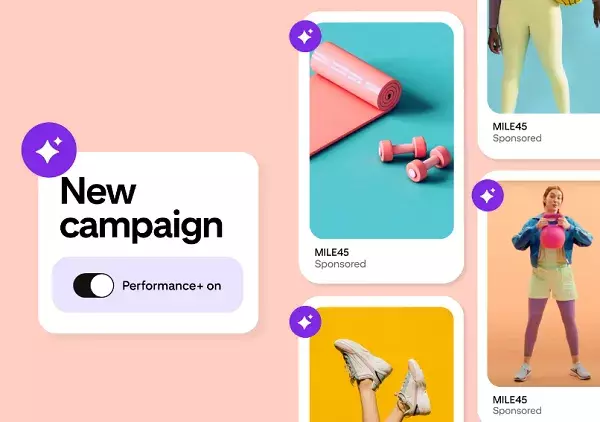In the ever-evolving landscape of social media marketing, platforms constantly seek innovative solutions to enhance advertising efficacy and user engagement. Pinterest’s recent launch of its “Performance+” suite is indicative of this trend, paralleling Meta’s Advantage+ AI-powered campaigns. This move not only emphasizes the increasing reliance on machine learning but also signals a significant shift in how advertisers will interact with their target audiences through automated systems.
Pinterest’s newly introduced performance suite, Performance+, aims to revolutionize how advertisers approach their campaigns. By capitalizing on internal data and sophisticated algorithms, Pinterest is offering a streamlined process that covers various aspects of the advertising journey, from targeting to ad creation. Advertisers are now equipped with the capability to choose between full automation or a hybrid approach, where they still retain some control over individual campaign elements.
The rationale behind such a model is rooted in Pinterest’s confidence in its machine learning capabilities. The platform suggests that opting for complete automation could yield better outcomes, a claim supported by their beta testing results. Advertisers reportedly experienced improvements exceeding 10% in key performance indicators, such as Cost Per Acquisition (CPA) and Cost Per Click (CPC). This performance boost is crucial for advertisers aiming to maximize their return on investment, especially in a competitive digital landscape.
One of the standout features of Performance+ is its enhanced bidding strategy that facilitates optimization based on Return on Ad Spend (ROAS). This new capability allows advertisers to maximize the value of their ads strategically, as it meticulously analyzes user interactions to deliver superior results. Given that many advertisers have historically focused on straightforward metrics like clicks and conversions, this evolution in bidding strategy suggests a more nuanced understanding of ad performance—prioritizing high-value interactions over sheer volume.
Furthermore, Pinterest is taking a user-centric approach by enabling personalized promotions tailored to each Pinner’s previous searches and pins. This segmentation allows brands to connect with users during critical shopping moments, particularly useful as the holiday season approaches. By highlighting relevant deals through the platform’s promotional tools, Pinterest empowers advertisers to bridge the gap between inspiration and transactions seamlessly.
As social media platforms increasingly integrate AI-driven solutions, advertisers are confronted with the choice of relinquishing control to automated systems or manually managing elements of campaigns. Pinterest’s Performance+ stands out as a pivotal example of how automation can significantly enhance advertising strategies. The potential for consistent results within a comprehensively automated framework is appealing, yet it raises questions about the degree to which advertisers are willing to cede control to algorithms.
Moreover, as these systems evolve, there could be apprehension among advertisers pertaining to transparency and accountability. It is crucial for platforms like Pinterest to find a balance between automation efficiencies and providing advertisers with insights that allow for informed decision-making. Without transparency regarding how automated systems operate, advertisers may struggle to fully trust the algorithms guiding their campaigns.
As we anticipate the impact of Pinterest’s Performance+ suite on the advertising sector, it becomes clear that the integration of AI and automation is not just a passing trend but a defining feature of modern marketing strategies. The ability to streamline ad processes while providing targeted content is set to enhance user experience and brand engagement. As advertisers prepare for the busy holiday shopping season, harnessing the full potential of Performance+ could present them with invaluable opportunities to elevate their marketing campaigns.
Ultimately, as Pinterest continues to carve its path on the social media advertising frontier, the effectiveness of Performance+ will hinge on its ability to deliver meaningful results while ensuring advertisers feel informed and in control of their campaigns. The future of advertising might well rest in a harmonious blend of human creativity and machine intelligence.


Leave a Reply